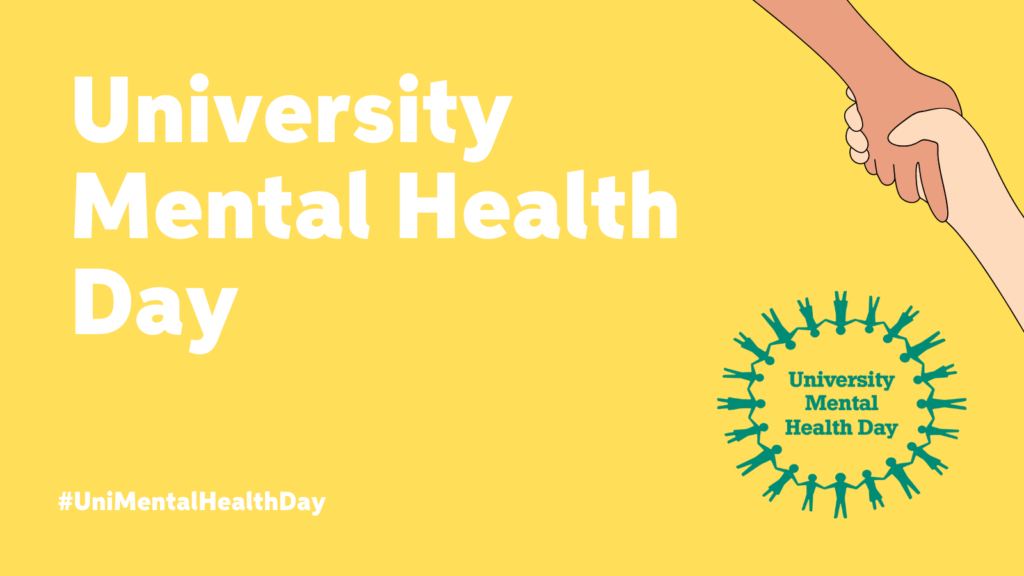
On this University Mental Health Day, we speak to Jo Smith and Sharon Mallon, authors of the new book Preventing and Responding to Student Suicide, on what can be done to ensure universities are supporting students’ mental health.
On Thursday 3rd of March 2022, over one hundred institutions around the country will collectively mark University Mental Health Day (UMHD). The event will bring together the whole university community as they attempt to ensure that mental health, and the conversations about how we can best support students who experience mental health problems during their studies, remain a top priority for universities. In these days when universities are dominated by those who grew up as part of the ‘digital native’ generation, the power of social media and events such as UMHD cannot be underestimated. They are important in creating and driving positive conversations about mental health and in challenging the ongoing stigma that surrounds mental health problems.
A great deal of work has already been done in the area of student mental health. Over the past decade, a number of studies and reports have helped to shed light on some of the key challenges that students face (DePury, 2017; Thorley, 2017; UUK and Papyrus, 2018). Promoting the ongoing changes that many institutions have already begun to implement, is key to protecting the future of student mental health. However, despite the increased efforts to provide better support, over the past decade there has also been increasing concern about the number of students who become overwhelmed by their emotional distress.
An estimated 95 students die by suicide every year (Mc Laughlin and Gunnell, 2021).
It is too early to report on how the number of students dying has been impacted by the Covid-19 pandemic. However, keeping up the conversations about student mental health and risk of suicide among this group has arguably never been more important as Covid-19 has undoubtedly been both an intense and enduring experience for both staff and students. In addition, some commentators think university education has been permanently altered, as face-to-face methods have been replaced, and hybrid or blended methods of teaching have become engrained in university pedagogy.
What is clear is that the experiences of students over the past few years, particularly their opportunities to form important connections with their fellow students in formal educational settings and to enjoy informal social occasions, have been fundamentally altered. We know the sense of belonging and connection these create are important in protecting against suicidal actions (Dhingra et al, 2021). We also know that periods of transition, such as the move into and out of the university community are times of heightened suicide risk (Rigg and Mahoney, 2021). The uncertainty that now surrounds such transitions are certainly cause for concern and it will be important for universities to respond to the future challenges that any longstanding changes in university approaches to delivery of lectures and seminars may cause. Part of this response must include planning and managing students who are at greatest risk of ending their life through suicide and those who are affected in those tragic cases when a death occurs. The government appears to have formally acknowledged this, as a letter on this issue was sent from Rt. Hon. Michelle Donelan MP to all HE providers in July 2021. It stated plainly that every provider should have a Suicide Safer policy that understands the risk factors for suicide and sets out a range of prevention activities designed to proactively intervene to support students at risk, and to respond sensitively when a tragedy takes place (Donelan, 2021).
Our new book Preventing and Responding to Student Suicide provides practical advice from a range of experts in the field of suicide prevention and student mental health. It describes the ways in which risk may be identified and managed by staff, students and support workers. It also describes some of the various aspects of student life that can contribute to risk, providing case study examples of their impact at the individual level. Since it was launched, we have undertaken a series of promotional events and workshops to promote the messages in the book and to provide practical guidance to colleagues working in the educational sector. We are proud to be part of the ongoing conversation and awareness raising efforts that are represented by events such as SMHD. We think these conversations are the key to providing safer university environments for all students. They reflect how many of us who work in the university community are working to ensure all educational environments take into account, and are responsive to the needs of its most vulnerable members.
References
DePury, J. (2017) Understanding student suicide Universities UK 16 February 2018
Dhingra, K., Taylor, P.J. and Klonsky, D. (2021) Chapter 6: From Suicidal Thoughts to Behaviour: Theoretical Perspectives on Student Suicide. In Mallon, S. and Smith J. (eds) Preventing and Responding to Student Suicide. Jessica Kingsley Publishers
Donelan, M. Rt Hon., (2021) Letter to all HE Providers. July 22nd
McLaughlin, J. and Gunnell. D. (2021) Chapter 1: The Problem of Suicide in The Higher Education Institution Sector, In Mallon, S. and Smith J. (eds) Preventing and Responding to Student Suicide. Jessica Kingsley Publishers
Rigg, K. and Mahoney, E. (2021) Chapter 7: Transitions and Student Suicide: The Role Of Higher And Further Education Sectors. In Mallon, S. and Smith J. (eds) Preventing and Responding to Student Suicide. Jessica Kingsley Publishers
Thorley C (2017) Not By Degrees: Not by degrees: Improving student mental health in the UK’s universities, IPPR. www.ippr.org/publications/not-by-degrees
Universities UK and PAPYRUS (2018) Suicide Safer Universities
Preventing and Responding to Student Suicide: A Practical Guide for FE and HE Settings is available now.